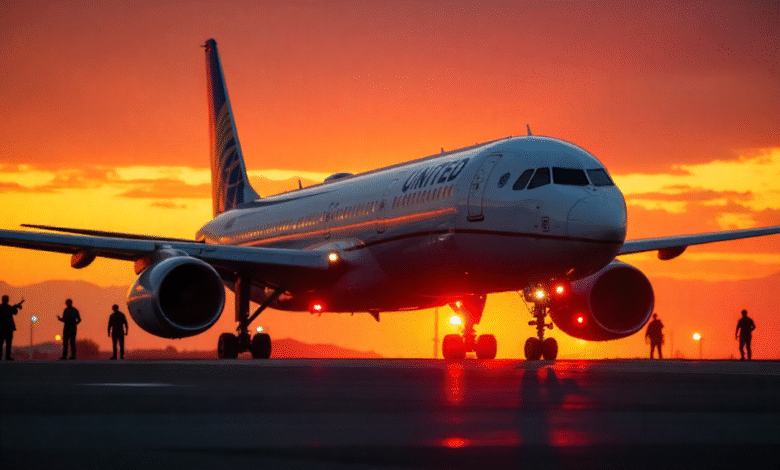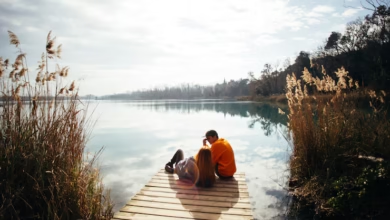Coyote Strike United Airlines Flight: What Happened and How It Affected Passengers

The Coyote Strike United Airlines Flight incident surprised many travelers and airline staff alike. On that unusual day, a coyote wandered close to the airport runway, causing an unexpected delay for passengers and crew. Flights had to be paused while the airport ensured the runway was safe and secure. Travelers reported feeling anxious as the situation unfolded because animals on runways are extremely rare and dangerous. Airlines like United Airlines have strict safety measures, but even then, nature can sometimes intervene in surprising ways. The incident highlights the importance of safety protocols and quick decision-making in aviation. Passengers on the affected flight had to wait patiently while airport authorities managed the situation, demonstrating how unforeseen events can impact travel plans and schedules.
This coyote strike United Airlines flight also shows the broader challenges airports face with wildlife. Coyotes, though generally shy, sometimes wander into areas close to airports in search of food or shelter. When this happens, airport staff must act quickly to prevent accidents and ensure flights remain safe. United Airlines followed strict safety procedures, keeping passengers informed and prioritizing safety over convenience. Experts explain that airports often use fencing, sensors, and wildlife patrols to reduce such risks, but animals are unpredictable. Passengers shared their experiences online, describing long waits, anxious moments, and relief when the situation was finally resolved. This incident reminds everyone that travel safety is a team effort involving pilots, ground staff, airport authorities, and sometimes even wildlife experts.
What Happened During the Coyote Strike United Airlines Flight
On the day of the incident, a coyote was spotted near the airport runway where the United Airlines flight was scheduled to take off. The airport quickly implemented safety procedures, halting all takeoffs and landings until the area was clear. Ground staff used specialized equipment to guide the coyote away from the runway safely. While this may sound unusual, wildlife sightings at airports are more common than most people think. Birds, deer, and even coyotes occasionally wander close to runways, creating potential hazards. In this case, the quick and professional response by airport personnel ensured the coyote was removed without harm to the animal or passengers.
How United Airlines Handled the Coyote Strike Situation
United Airlines acted swiftly to handle the coyote strike United Airlines flight incident. Airline staff made announcements to keep passengers informed, explaining the delay and reassuring them that safety was the top priority. Ground teams coordinated with airport wildlife experts to safely remove the coyote and inspect the runway. Airlines have strict protocols for unexpected wildlife incidents, and this event was a real-life example of those plans in action. By prioritizing communication and safety, United Airlines reduced passenger stress and prevented potential accidents.
Passenger Experiences on the Coyote Strike United Airlines Flight
Passengers shared their experiences during the coyote strike United Airlines flight delay. Many reported initial anxiety when they learned a wild animal had been spotted near the runway. Some passengers took photos or videos, while others focused on waiting patiently. Online social media posts highlighted the unusual nature of the event, with many expressing amazement that a coyote could cause a flight delay. Ultimately, passengers appreciated the professionalism of United Airlines staff and airport personnel, who kept everyone calm and safe during the unexpected situation.
Airport Safety Measures Against Wildlife Incidents
Airports have multiple measures to prevent wildlife from interfering with flights. Fencing, patrols, and monitoring systems are used to detect animals early. Wildlife experts work with airports to safely remove animals like coyotes, birds, and deer before they can cause accidents. The coyote strike United Airlines flight incident serves as a reminder that airports must remain vigilant. Even with these precautions, nature can still surprise us, showing the importance of prepared protocols and trained personnel who can act quickly.
Lessons Learned From the Coyote Strike United Airlines Flight
This incident taught several lessons about air travel and wildlife management:
- Always Prioritize Safety: Passenger safety is more important than keeping a flight on schedule.
- Communication Is Key: Keeping passengers informed reduces stress during delays.
- Preparedness Matters: Airports must have trained staff and proper tools to handle wildlife incidents.
- Teamwork Prevents Accidents: Collaboration between airlines, ground staff, and wildlife experts ensures smooth management.
Why Wildlife Can Impact Air Travel Unexpectedly
Wild animals like coyotes, birds, and deer sometimes wander near airports unexpectedly. They may be searching for food, water, or shelter, and their presence can create serious hazards for planes. Even small animals can damage aircraft engines or cause accidents during takeoff and landing. This is why airports invest in wildlife management programs, which include detection systems, barriers, and trained wildlife control teams. The coyote strike United Airlines flight reminds travelers that, while rare, these events are possible and require careful handling.
Steps United Airlines Takes to Ensure Passenger Safety
United Airlines follows strict safety protocols during unusual incidents like the coyote strike. These include:
- Immediate flight delays or rerouting when wildlife is near the runway
- Coordinating with airport staff to inspect and secure the area
- Communicating updates to passengers clearly and promptly
- Following aviation safety regulations to prevent accidents
Conclusion
The coyote strike United Airlines flight incident was a rare but important reminder of how unpredictable travel can be. It highlighted the need for safety protocols, communication, and teamwork among airline staff, airport authorities, and wildlife experts. While passengers faced a delay, the event ended safely thanks to the careful handling by professionals. It also educates travelers about the unexpected ways wildlife can affect airports and air travel. In the end, everyone involved learned valuable lessons about preparedness and safety, proving that even unusual events can be managed successfully with the right approach.
FAQs
Q1: How often do animals cause flight delays?
A: While rare, animals like birds, deer, and occasionally coyotes do cause delays. Airports have safety measures in place to manage these events.
Q2: Was anyone hurt during the coyote strike United Airlines flight?
A: No, the coyote was safely removed, and all passengers and staff were unharmed.
Q3: How do airports prevent wildlife incidents?
A: Airports use fencing, patrols, monitoring systems, and trained wildlife experts to prevent animals from reaching runways.



